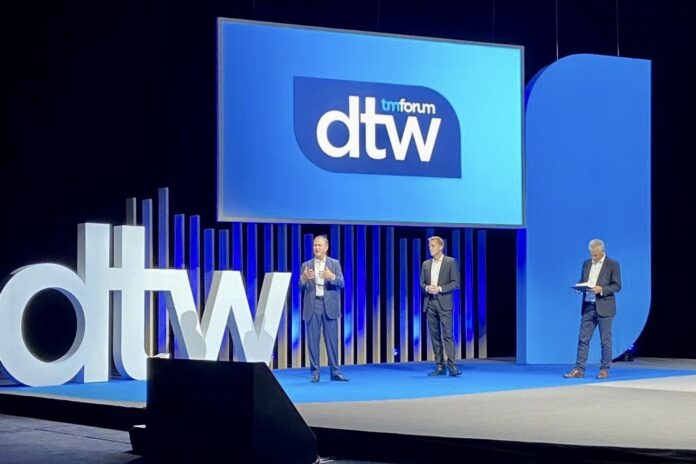Sponsored: Operators must automate everything that can be automated to reduce costs, tackle complexity and exploit business opportunities
5G and edge promise to deliver improved business success for Communications Service Providers (CSPs) by providing a foundation for increased service innovation, higher revenue, and agility. However, 5G and Edge will also drive new complexity and requirements as consumers and enterprises alike demand superior and differentiated services and experiences.
Powered primarily by software, cloud, and programmable technologies, 5G is an order of magnitude more complex than the previous generations of communications networks that largely relied on physical infrastructure.
Consequently, to achieve profitability and agility, CSPs not only have to evolve their business models but also must reimagine their operations to manage the increased complexity and drive down operational costs through hyper automation–this is going to be pivotal to achieving profitability and service agility in the 5G era.
Telco to techco needs automation
The traditionally siloed tools and fractured operations make it difficult to move beyond the manual, swivel chair operations in the era of 5G. A lack of technical agility hinders the ability to exploit the benefits of cloud technology, and a lack of business agility constrains the ability to capitalise on new business models required to monetise 5G.
In short, traditional telcos must transform to become “techcos”– modern service providers that embrace automation and cloud native technologies to deploy innovative business models and deliver higher value differentiated experiences to their customers.
CSPs must automate everything that can be automated to help reduce costs, tackle complexity, and exploit emerging business opportunities. This includes the top-down automation where the customer intent is captured during the self-serve ordering process, then modeled and seamlessly implemented in downstream systems from business operations to service operations, and network operations.
This intent-based top-down automation must be complemented by closed-loop automation facilitated by an end-to-end service automation platform, combining service orchestration, inventory and topology, and service assurance.
Essential solutions to help increase profitability and attain agility
This end-to-end service automation environment forms the foundation for autonomous operations with the ability to support both top-down intent driven automation and closed loop automation. In essence, the customers, whether enterprises or developer communities building applications or solutions, must be able to procure, order, and provision network services on-demand, much like the way they consume IaaS, PaaS, and SaaS services today.
As CSPs assess their automation architectures to meet these needs, they should consider the following seven solution characteristics:
Rapid design and intent-based service orchestration: Get products and services to customers faster by orchestrating processes and network configurations across a multi-domain multi-vendor network, as well as automating billing, partner management, supply chain, and service delivery.
- Unified network view – provide a “single pane of glass” view of network resources and their interdependencies based on accurate discovery and reconciliation, enabling automation of key processes such as orchestration and service impact analysis.
- Automated root cause analysis – perform rapid detection and root cause analysis of network and service performance issues using an assurance platform—combining fault management, performance monitoring, and topology—together with supervised event correlation and unsupervised learning capabilities to assure and deliver superior network experiences and predictive operations.
- Unified topology – instantly obtain and maintain an accurate and near real-time topological view of the inter-relationships between network functions (e.g., physical, virtual, and containerized), across the RAN, transport, and core networks to drive automated operations. Enable diverse automation use cases such as virtual triage, root cause analysis, service impact analysis, and inventory enrichment.
- Network as a platform – combine orchestration, inventory, and assurance with standards-based integrations to create an automation platform to drive hyper-automated operations. Abstract underlying network complexities with southbound integrations into domain specific controllers and provide well-defined northbound APIs to higher layer business systems—as well as external entities such as enterprises and developer ecosystems—to enable consumption of network services on demand.
- Cloud native and microservices architecture – employ modern application development paradigms to achieve benefits such as IT and service agility and granular application scaling. Using cloud native and microservices architecture combined with CI/CD allows CSPs to not only increase the velocity of service innovation but also positions them to deploy the application components in multi-cloud environments.
- Open standards compliance – build and/or buy applications that comply with open standards such as TMF Open APIs and TMF Open Digital Architecture (ODA) to enable ease of integration with third party components in a multi-vendor, multi-cloud environment.
At last year’s Digital Transformation World (DTW), Oracle Communications and Verizon Managed Network Services presented a case study highlighting this successful approach in action. Learn more about how Oracle Communications can enable CSPs to achieve hyper-automated operations and other critical CSP business issues at DTW23-ignite, 19-21 September in Copenhagen.
About the author

Anil Rao is Senior Director of Product Marketing and Strategy, Oracle Communications



